Éthique et développement de carrière (en anglais)
Dernière mise à jour : octobre 2014
Adkins, N., and Radtke, R.R., (2004). Students’ and Faculty Members’ Perceptions of the Importance of Business Ethics and Accounting Ethics Education: Is There an Expectations Gap? Journal of Business Ethics, Volume 51, pp. 279-300.
Ainsworth, S., & Hardy, C. (2004). Discourse and identities. In D. Grant, C. Hardy, C. Oswick, & L. Putnam, (Eds.). The Sage handbook of organizational discourse (pp. 153-173). London: Sage.
Akos, P., & Scarborough, J.L. (2004). An examination of the clinical preparation of school counsellors. Counselor Education and Supervision. 44(2), 96-107.
Allen, J. (2007). A multicultural assessment supervision model to guide research and practice. Professional Psychology: Research and Practice, 38(3), 248-258.
American Counseling Association. (2005). ACA Code of Ethics. Alexandria, VA: Author.
American Psychological Association. (2002). Ethical principles of psychologists and code of conduct. American Psychologist, 57(12).
American School Counselor Association (2010). Ethical standards for school counsellors.
Amir, T., & Gati, I. (2006). Facets of career decision-making difficulties. British Journal of Guidance & Counselling, 34(4), 483-503.
Amundson, N.E., Harris Bowlsbey, JA., Niles, S.G. (2009). Essential Elements of Career Counseling: Processes and Techniques. Merrill.
Amundson, N. (2006). Challenges for career interventions in changing contexts. International Journal for Educational and Vocational Guidance, 6, 3-14.
Amundson, N., Harris-Bowlsbey, J., Niles, S. (2005). Essential Elements of Career Counseling. New Jersey: Pearson Prentice Hall.
Amundson, N.E. (2002). Coloring outside the lines: Boundary issues for counsellors. Journal of Employment Counseling. 39(3), 138-144.
Andersen, P., Vandehey, M. (2011). NEW Career Counseling and Development in a Global Economy. Wadsworth.
Anderson, D.D., & Shore, W.J. (2008). Ethical Issues and Concerns Associated with Mentoring Undergraduate Students, Ethics and Behaviour, 18:1, 1-25.
Anderson, S.K., Peila-Shuster, J.J., Aragon, A. (2012). Cross Cultural Career Counseling: Ethical Issues to Consider. Career Planning and Adult Development Journal.
Arribas-Ayllon, M., & Walkerdine, V. (2008). Foucauldian discourse analysis. In C. Willig & W. Stainton-Rogers (Eds), The Sage handbook of qualitative research in psychology (pp. 91-108). Los Angeles, CA: Sage.
Arthur, N., & Achenbach, K. (2002). Developing multicultural counselling competencies through experiential learning. Counselor Education and Supervision, 42(1), 2-14
Athanasou, J.A., Van Esbroeck, R. (2008). International Handbook of Career Guidance. Springer.
BACP (2003a). Introduction to Online Counselling and Psychotherapy. Rugby, England: British Association for Counselling and Psychotherapy.
Bain, S.F. School counsellors: a review of contemporary issues. Research in Higher Education Journal. Vol. 18, (December 2012).
Barak, A. (2006). Internet career assessment. In J. Greenhaus & G. Callanan (Eds.), Encyclopedia of Career Development. (pp. 404-405). Thousand Oaks, CA: SAGE.
Barak, A., & Cohen, L. (2002). Empirical examination of an online version of the Self-Directed Search. Journal of Career Assessment, 10, 387-400.
Barnett, J.E., and Johnson, W.B. (2010). Ethics Desk Reference for Counselors. American Counseling Association Publications.
Barnett, J.E., Erickson Cornish, J.A., Goodyear, R.K., & Lichtenberg, J.W., (2007). Commentaries on the ethical and effective practice of clinical supervision. Professional Psychology: Research and Practice, 38, 268-275.
Barnes, K.L. (2004). Applying self-efficacy theory to counsellor training and supervision: A comparison of two approaches. Counselor Education & Supervision, 44(1), 56-69.
Barnett, J.E., Behnke, S.H., Rosenthal, S.L., & Koocher, G.P. (2007). In case of ethical dilemma, break glass. Commentary on ethical decision making in practice. Professional Psychology: Research and Practice, 38(1), 7-12.
Barnett, J.E., Johnson, L.C., & Hillard, D. (2006). Psychological wellness as an ethical imperative. In L. VandeCreek & J.B. Allen (Eds.), Innovations in clinical practice: Focus on health and wellness (pp. 257-271). Sarasota, FL: Professional Resources Press.
Barosa-Pereira, A. (2014). Building Cultural Competencies in Coaching: Essay for the First Steps. Bridgepoint Education, Inc. and Wiley Periodicals, Inc.
Baruch, Y. (2004). Transforming careers: from linear to multidirectional career paths. Career Development International, 11 (1), 58-73.
Bashe, A., Anderson, S.K., Handlesman, M.M., & Klevansky, R. (2007). An acculturation model for ethics training: The ethics autobiography and beyond. Professional Psychology: Research and Practice, 38, 60-67.
Beauregard, A., (2007). Family influences on the career life cycle. London School of Economics.
Behnke, S. (2008). Reflections on training ethical psychologists. Monitor on Psychology, 39, p. 58.
Behnke, S. (2005). Record-keeping under the new ethics code. Monitor on Psychology, 36(2), 72-73.
Bergen Braun, R. (2009). Ethics in Counsellor Education: A Sample Orientation Manual. Thesis. University of Lethbridge.
Bersoff, D.N. (2008). Ethical conflicts in psychology (4th ed.). Washington, DC: American Psychological Association.
Besley, A.C. (2002a). Counselling youth. Foucault, power and the ethics of subjectivity. Rotterdam: Sense Publishers.
Besley, A.C. (2002b). Foucault and the turn to narrative therapy. British Journal of Guidance and Counselling, 30, 125-143.
Bhat, C.S. (2005). Enhancing counselling gatekeeping with performance appraisal protocols. International Journal for the Advancement of Counselling, 27, 399-411.
Birdsall, B., & Hubert, M. (2000, October). Ethical issues in school counselling. Counseling Today, pp. 30, 36.
Bloch, D.P. (2005). Complexity, chaos, and nonlinear dynamics: A new perspective on career development theory. The Career Development Quarterly, 53(March), 194-207.
Bluestein, D.L. (2008). The role of work in psychological health and well-being: A conceptual, historical, and public policy perspective. American Psychologist, 63, 228-240.
Bluestein, D.L. (2006). The psychology of working: A new perspective for career development, counselling, and public policy. Mahwah, NJ: Erlbaum.
Bimrose, J., Barnes, S-A, Brown, A., Hasluck, C., and Behle, H. (2007). Skills diagnostics and screening tools: A Literature review. Department for Work and Pensions.
Boer, P.M., (2001). Career counselling over the Internet. Mahwah, NJ: Erlbaum.
Bond, T. (2000). Standards and Ethics for Counselling in Action. Sage Publishing.
Borders, L.D., & Brown, L.L. (2005). The new handbook of counselling supervision. Mahwah, N.J.: Erlbaum.
Brabender, V. (2006). The ethical group psychotherapist. International Journal of Group Psychotherapy. 56(4), 395-414.
Bradley, L.J., Ladany, N., (2001). Counselor Supervision: Principles, Process and Practice. Brunnel-Routledge.
Branch, R., Sheward, St (2012). Motivational Career Counselling & Coaching. Sage Publications Limited.
Brandt, J.R. (2001). Employees change the rules. Industry Week/IW, 250(5), 15.
Bratt, W. Ethical Considerations of Social networking for Counsellors. Canadian Journal of Counselling and Psychology. Vol. 44 No. 4 (2010) Pages 335-345.
Brear, P., Dorrian, J., & Luscri, G. (2008). Preparing our future counselling professionals: Gatekeeping and the implications for research. Counselling and Psychotherapy Research, 8, 93-101.
Brown, D. Revised (2012). Career information, career counselling, and career development. Boston: Pearson.
Brown, C., & Trangsrud, H.B. (2008). Factors associated with acceptance and decline of client gift giving. Professional Psychology: Research and Practice. 39(5), 505-511.
Brown, S.D., Lent, R.W., (2004). Career Development and Counselling: Putting Theory and Research to Work. Wiley.
Burney, J.P., Celeste, B.L., Johnson, J.D., Klein, N.C., Nordal, K.C., & Portnoy, S.M. (2009). Mentoring professional psychologists: Programs for career development, advocacy, and diversity. Professional Psychology: Research and Practice, 40, 292-298.
Butterfield, L.D., Borgen, W.A., Amundson, N.E., & Erlebach, A.C. (2010). What helps and hinders workers managing change? Wiley.
Butterfield, L.D., Borgen, W.A., Maglio, A.T.& Amundson, N.E. (2009). Using the Enhanced Critical Incident Technique in Counselling Psychology Research. Canadian Journal of Counselling, 43(4), 265-282.
Butterfield, L., Lalande, V., Borgen, B. (2009). Career Conversations, Literature Review. Canadian Research Working Group.
Cabaniss, K. (2001b). Computer-Related Technology Use by Counselors in the New Millennium: A Delphi Study. Journal of Technology in Counseling 2(2).
Canadian Counselling Association/Association Canadienne de Counseling. (2007). Code of Ethics.
Capuzzi, D. (Editor), Stauffer, M.D. (Editor), (2011). Career Counselling: Foundations, Perspectives, and Applications. Edition 2. Routledge, Taylor and Francis Group.
Cardosa, P., & Marques, J. (2008). Perception of career barriers: The importance of gender and ethnic variables. International Journal for Educational and Vocational Guidance, 8, 49-61.
Chang, J. (2011). An Interpretive Account of Counsellor Development. Canadian Journal of Counselling and Psychotherapy. Vol. 45 No. 4. 406-428.
Chope, R.C. (2008). Practice and Research in Career Counseling and Development – 2007. The Career Development Quarterly, Vol. 57, Iss. 2, pp. 98.
Chung, B.Y. (2003). Career Coaching: Practice, Training, Professional, and Ethical Issues. Career Development Quarterly, Vol. 52, No. 2.
Clay, J., Erdmann, A., and Spiess, J. (2014). Twitter Ethics for #SApros. The Student Affairs Feature.
Coetzee, M., Roythorne-Jacobs, H. (2011). Career Counselling and Guidance in the Workplace. Juta Academic.
Coetzee, M., Esterhuizen, K. (2010). Psychological career resources and coping resources of the young unemployed African graduate: an exploratory study. SA Journal of Industrial Psychology. Vol. 36, no. 1.
College of Alberta Psychologists (2005). Protection and disclosure of psychological test data and materials: ethical and legal obligations of psychologists. CAP Monitor, 20.
Constable, E.G., Kreider, T.B., Smith, T.F., & Taylor, Z.R. (2011). The confidentiality of a confession: A counselling intern’s ethical dilemma.
Constantine, M., Hage, S., Kindaichi, M., & Bryant, R. (2007). Social justice and multicultural issues : Implications for the practice and training of counselors and counseling psychologists. Journal of Counseling & Development, 85, pp. 25-29.
Cory, G. (2012). Theory and Practice of Counseling and Psychotherapy. Brooks/Cole Cengage Learning.
Corey, G., Schneider Corey, M., Callanan, P. (2011). Issues and Ethics in the Helping Professions. (8th ed.). Pacific Grove, CA: Brooks/Cole.
Corey, G., Herlihy, B., & Henderson, K. (2008). Perspectives on ethical counselling practice. Ethical Issues in Professional Counseling, 11(1), 1-11.
Corey, G., Corey, M.S., & Callanan, P. (2007). Issues and ethics in the helping professions. (7th ed.). Belmont, CA: Thomson.
Corey, G., Corey, M.S., & Callanan, P. (2005). An approach to teaching ethics courses in human services and counseling. Counseling and Values, 49, 193-297.
Cottone, R.R., & Tarvydas, V.M. (2007). Counseling ethics and decision making (3rd ed.). Upper Saddle River, NJ: Merrill/Prentice Hall.
Cottone, R.R., Tarvydas, V.M. (2006). Counseling Ethics and Decision Making. Pearson/Merrill Hall.
Cottone, R.R., Tarvydas, V.M. (2003). Ethical and professional issues in counselling. Merrill Prentice Hall.
Cottone, R., & Claus, R. (2000). Ethical decision-making models: A review of the literature. Journal of Counseling and Development, 78, (3), 275.
Curlette, W.L., Kern, R.M. Editors’ Notes: Ethics, Research, and Applications. Journal of Individual Psychology of Texas Press. Summer 2010, 66:2.
Curry, J.R. (2007). An Investigation of the Relationship between Counseling Self-Efficacy and Counselor Wellness among Counselor Education Students. Thesis. University of Central Florida.
Debiak, D. (2007). Attending to diversity in group psychotherapy: An ethical imperative. International Journal of Group Psychotherapy, 57(1), 1-12.
De las Fluentes, C., Willmuth, M.E., & Yarrow, C. (2005). Competency training in ethics education and practice. Professional Psychology: Research and Practice, 36, 362-366.
Dittmann, M. (2003). Maintaining ethics in a rural setting. Monitor on Psychology, 34(6), 66.
Dolgoff, R., Loewenberg, F.M., & Harrington, D. (2009). Ethical decisions for social work practice (8th ed.). Belmont CA: Brooks/Cole, Cengage Learning.
Dollarhide, C.T., & Miller, G.M. (2006). Supervision for preparation and practice of school counsellors: Pathways to excellence. Counselor Education & Supervision, 45, 242-252.
Downs, L. (2003). A preliminary survey of relationships between counsellor educators’ ethics education and ensuing pedagogy and responses to attractions with counselling students. Counseling and Values, 48(1), 2-13.
Duggan, M.H., & Jurgens, J.C. (2007). Career interventions and techniques : A complete guide for human service professionals. Needham Heights, MA: Allyn & Bacon.
Edelstein, P. (2003). Adult Career Development and Counselling Intervention Guide. Thesis, University of Lethbridge.
Falvey, J. (2002). Managing clinical supervision: Ethical and legal risk management. Belmont, CA: Brooks/Cole, Cengage Learning.
Feldman, D.C. (2001). Career coaching: What HR professionals and mangers need to know. Human Resource Planning, 24(2), 26-35.
Fenichel, M., Suler, J., Barak, A., Zelvin, E., Jones, G., Munroe, K., Meunier, V., and Walker-Schmucker, W. (2002). ‘Myths and Realities of Online Clinical Work’. CyberPsychology & Behavior 5: 481-497.
Figler, H., Bolles, R. (2007). The Career Counselor’s Handbook. (2nd Edition). Ten Speed Press.
Fisher, C.B. (2013). Decoding the Ethics Code. A Practical Guide for Psychologists, Third Edition. Sage Publications.
Fisher, M.A. (2009). Replacing “Who is the client?” with a different ethical question. Professional Psychology: Research and Practice, 40(1), 1-7.
Fisher, M.A., (2008). Protecting confidentiality rights: The need for an ethical practice model. American Psychologist, 63, 1-3.
Fisher, M. (2008b). Clarifying confidentiality with the ethical practice model. American Psychologist, 63(7), 624-625.
Flores, L.Y., Spanierman, L.B. and Obasi, E.M. Ethical and Professional Issues in Career Assessment with Diverse Racial and Ethnic Groups. Journal of Career Assessment, (February 2003), vol. 11, no. 1, 76-95.
Foster, D., & Black, T.G. (2007). An integral approach to counselling ethics. Counseling and Values, 51(3), 221-234.
Fouad, N.A. Editor-in-Chief (2012). APA Handbook of Counseling Psychology. American Psychological Association.
Fox, R.M., & Demarco, J.P. (2002). Moral reasoning. Belmont, CA: Wadsworth Group.
Frame, M.W., & Williams, C.B. (2005). A model of ethical decision making from a multicultural perspective. Counseling and Values, 49(3), 165-179.
Freeman, S., Ethical Principles Revisited. Journal of Professional Counseling Practice, Theory & Research. July 1, 2011.
Fuentes, C., Willmuth, M., & Yarrow, C. (2005). Competency training in ethics education and practice. Professional Psychology: Research and Practice, 36(4), pp. 362-366.
Gallos, J.V. (2005). Career Counseling Revisited: A Developmental Perspective. Special Issue Career Planning and Adult Development Journal (Summer 2005).
Garcia, J., Cartwright, B., Winston, S., & Borzuchowska, B. (2003). A transcultural integrative model for ethical decision-making in counselling. Journal of Counseling & Development, 81(3), 268.
Gibson, R.L., and Mitchell, M.H. (2006). Introduction to Career Counselling for the 21st Century. New Jersey: Merrill Prentice Hall.
Gibson, D. (2004). Role models in career development: new directions for theory and research. Journal of Vocational Behavior, 65, 134-156.
Gladding, S.T. (2006). Counseling: A Comprehensive Profession. Pearson/Merrill Prentice Hall.
Goddard, T. (2009). Considering Online Career Interventions. Training Innovations Inc.
Graham, G. (2004). Eight theories of ethics. New York: Routledge.
Grant, A.M. (2009). Workplace, Executive and Life Coaching: An Annotated Bibliography from the Behavioural Science and Business Literature (May 2009), Coaching Psychology Unit, University of Sydney, Australia.
Grawitch, M.J., Trares, S., & Kohler, J.M. (2007). Healthy workplace practices and employee outcomes. International Journal of Stress Management, 14(3), 275-293.
Haas, L.J., & Malouf, J.L. (2002). Keeping up the good work: A practitioner’s guide to mental health ethics (3rd ed.). Sarasota, FL: Professional Resource Press.
Hadjistavropoulos, T., & Bieling, P.J. (2000). When reviews attack: Ethics, free speech, and the peer review process. Canadian Psychology, 41, 152-159.
Handlesman, M.M., Gottlieb, M.C., & Knapp, S. (2005). Training ethical psychologists: An accumulation model. Professional Psychology: Research and Practice, 36, 39-65.
Handlesman, M., Knapp, S., & Gottlieb, M. (2002). Positive ethics. In C. Snyder & S. Lopez (Eds.), Handbook of positive psychology (pp. 731-744). New York: Oxford.
Harris-Bowlsbey, J., Suddarth, B.H., & Reile, D.M. (2005). Facilitating career development: Student manual (2nd ed.). Broken Arrow, OK: National Career Development Association.
Harris-Bowlsbey, J. (2003). A rich past and a future vision. Career Development Quarterly, 52 (1), 18-25.
Harris-Bowlsbey, J. & Sampson, J. (2001). Computer-based career planning systems: Dreams and realities. Career Development Quarterly, 49, (3), p. 250-260.
Haverkamp, B.E. (2005). Ethical perspectives on qualitative research in applied psychology. Journal of Counseling Psychology, 52(2), 146-155.
Haverkamp, B.E., & Irvine, K.A. (2000). Ethical reasoning and ethics instruction. In W. E. Schultz (Ed.), Counselling ethics casebook 2000 (2nd ed.) (pp. 251-259). Ottawa
Hayes, C., & Morgan, Mark. (2011). Research on The Practice of Counselling by Guidance Counsellors in Post Primary Schools. National Centre for Guidance in Education.
Hayes, L.L. (2002, September). Ethical dilemmas can be solved through ACA. Counseling Today, 45(3), 18, 24.
Herlihy, B., & Corey, G. (2008). Boundaries in counselling: Ethical and clinical issues. Ethical Issues in Professional Counseling, 11(2), 13-24.
Herlihy, B., and Corey, G. (2006). ACA Ethical Standards Casebook, Sixth Edition. American Counseling Association.
Herlihy, B. and Corey, G. (2006). Boundary Issues in Counseling: Multiple Roles and Responsibilities, Second Edition. American Counselling Association.
Herlihy, B., Gray, N., & McCollum, V. (2002). Legal and ethical issues in school counsellor supervision. Professional School Counseling, 6(1), 55-60.
Hill, A.L. (2004). Ethical analysis in counselling: A case for narrative ethics, moral visions, and virtue ethics. Counseling and Values, 48, 131-147.
Hill, A.L. (2004). Ethics education: Recommendations for an evolving discipline. Counseling and Values. 48, 183-194.
Hiranandani, V. (2012). Diversity Management in the Canadian Workplace: Towards an Antiracism Approach. Urban Studies Research, Volume 2012.
Hohenshil, T.H, (2000). High tech counselling. Journal of Counseling & Development, 78(3), 365-368.
Hook, D. (2007). Foucault, psychology and the analytics of power. London: Palgrave MacMillan.
Houser, R., Wilczenski, F.L., & Ham, M. (2006). Culturally relevant ethical decision-making in counselling. Thousand Oaks, CA: Sage.
Hsiung, R.C. (2003). E-therapy: Opportunities, dangers and ethics to guide practice. In R. Wooton, P. Yellowlees, & P. McLarten (Eds.), Telepsychiatry and e-mental health (pp. 73-82). London: Royal Society of Medicine Press.
Huey, W.C., & Remley, T.P. (2002). Ethical and legal issues in school counselling. Faifax, VA: American School Counselor.
Hughes, D., Bimrose, J., Barnes, S-A., Bowes, L., and Orton, M. (2005). A Systematic Literature Review of Research into Career Development Interventions for Workforce Development. Warwick Institute for Employment Research.
Ivey, A., Ivey, M., Zalaquett, C. (2013) Intentional Interviewing and Counseling: Facilitating Client Development in a Multicultural Society. Cengage Learning.
Jain, S., & Roberts, L. (2009). Ethics in psychotherapy: A focus on professional boundaries and confidentiality practices. Psychiatric Clinics of North America, 32(2), 299-314.
Janson, G.R. (2002). Family counselling and referral with gay, lesbian, bisexual, and transgendered clients: Ethical Considerations. The Family Journal, vol. 10, 328-333.
Jenkins, P. (2002). Legal issues in counselling and psychotherapy. Thousand Oaks, CA: Sage.
Johnson, W.B., Ellman, N.S., Forrest, L., Robiner, W.N., Rodolfa, E., & Schaffer, J.B. (2008). Addressing professional competence problems in trainees: Some ethical considerations. Professional Psychology: Research and Practice, 39, 589-599.
Johnson, W.B. (2003). A framework for conceptualizing competence to mentor. Ethics & Behavior, 13, 127-151.
Jordon, K., & Stevens, P. (2001). Teaching ethics to graduate students: A course model. The Family Journal: Counseling and Therapy for Couples and Families, 9, 178-184.
Jungers, C.M., Gregoire, J. Editors, (2013). Counseling Ethics, Philosophical and Professional Foundations. Springer Publishing Company.
Kay, D. (2008). Considerations When Counselling Deaf Clients. Thesis. University of Lethbridge.
Kidd, J.M. (2006). Understanding career counselling: theory, research and practice. Sage.
Kitchener, K.S., (2000). Foundations of ethical practice, research, and teaching in psychology. Mahwah, NJ: Lawrence Erlbaum Associates.
Knapp, S.J., & VandeCreek, L.D. (2006). Practical ethics for psychologists: A positive approach. Washington, DC: American Psychological Association.
Kocet, M.M., (2006). Ethical challenges in a complex world: Highlights of the 2005 ACA code. Journal of Counseling and Development, 84, 228-234.
Laing, R.D. (2012). Interpersonal Perception: A Theory and a Method of Research. Springer Publishing Company.
Lehr, R., Sumarah, J. Professional judgement in Ethical Decision Making: Dialogue and Relationship. Canadian Journal of Counselling and Psychotherapy. Vol. 38, No 1, (2004).
Linnell, D. (2002 September), Ethics 101: An overview of the code of ethics, standards of practice. Counseling Today, 45(3), 30, 34.
MIT Global Education & Career Development. (2014) Career Development Handbook. Massachusetts Institute of Technology.
Makela, J.P. A case study approach to ethics in career development. National Career Development Association.
Mallon, M., & Walton, S. (2005). Career and learning: the ins and the outs of it. Personnel Review, 34 (4), 468-487.
Mama, R. (2001). Preparing social work students to work in culturally diverse settings. Social Work Education, 20(3), pp. 373-384.
Manthei, R. (2006). Counselling: The Skills of Finding Solutions to Problems. Taylor & Francis.
Maree, J.G., Molepo, J.M. Changing the approach to career counselling in a disadvantaged context: a case study. Australian Journal of Career Development. (Mar. 22, 2007).
Marshall, A., & Shepard, B. (2006). Youth on the margins: Ethical conduct in focus group research with adolescents. In B. Leadbeater, E. Banister, C. Benoit, M. Jansson, A. Marshall, & T. Riecken (Eds.), Ethical Issues in Community-Based Research with Children and Youth (pp. 139-156). Toronto: University of Toronto Press.
Marshall, A., & Batten, S. Researching Across Cultures: Issues of Ethics and Power. Forum: Qualitative Social Research. Vol. 5, No. 3, (September 2004).
McDonald, K.S. & Hite, L.M. (2005). Ethical issues in mentoring: The role of HRD. Advances in Developing Human Resources; 7(4), 569-583.
McGinn, M.K., and Bosacki, S.L. Research Ethics and Practitioners: Concerns and Strategies for Novice researchers Engaged in Graduate Education, Forum: Qualitative Social Research, Volume 5, No. 2, May 2004.
McIlveen, P.F. and Patton, W.A. (2007). Narrative career counselling: Theory and exemplars of practice. Australian Psychologist 42(3):pp. 226-235.
McIlveen, P., & Patton, W. (2006). A critical reflection on career development. International Journal for Educational and Vocational Guidance, 6, 15-27.
McMahon, M., Patton, W. (2006). Career Counselling: Constructivist Approaches. Taylor & Francis.
Menkel-Meadow, C. (2001). Can They Do That? Legal Ethics in Popular Culture: Of Characters and Acts. Georgetown Law.
Mitchell, R. (2007). Documentation in Counseling Records: An Overview of Ethical, Legal, and Clinical Issues. Third Edition. American Counseling Association.
Moga, F. (2010). Ethical Considerations in Career Counselling.
Moretti, M., Leadbeater, B., & Marshall, A. (2006). “Stepping into community-based research: preparing students to meet new ethical and professional challenges”. In B. leadbeater, B. Banister, E., Benoit, C., Jansson, M., Marshall, A., & Riecken, T. (Eds.) Ethics in community-based research with children and youth. Pp. 232-247. Toronto, ON: University of Toronto Press.
Motsoaledi, L., Cilliers, F. (2012). Executive coaching in diversity from the systems psychodynamic perspective. SA Journal of Industrial Psychology. Vol. 38 no. 2
Mulcahy, Boer, P. (2001). Career Counseling Over the Internet: An Emerging Model for Trusting and Responding to Online Clients. Routledge.
Nagy, T. (2000). Privacy and confidentiality. Ethics in plain English: An illustrative casebook for psychologists. Washington, DC: American Psychological Association.
National Health and Medical Research Council. (2007). National statement on ethical conduct in human research.
Neumann, H., McCormick, Amundson, N.E., McLean, H.B. Career Counselling First Nations Youth: Applying the First Nations Career-Life Planning Model. Canadian Journal of Counselling. (2000). Vol. 34:3.
Niles, S.G., Harris-Bowlsbey, JA. (2012). Career Development Interventions in the 21st Century (4e). Pearson Higher Ed USA.
Nixon, M.R. (2010). The Ethics of E-Counselling. VDM Publishing.
Nugent, F.A., Jones, K.D. (2008). Introduction to the Profession of Counseling, Fifth Edition. Merrill.
Ochalla, B., & Green, L. (2003). Getting it done: Support employee development. Credit Union Management.
O’Donnell, M.P., (2007). Psychologically healthy workplaces. American Journal of Health Promotion, 21(3), iv.
O’Halloran, T., Fahr, A., Keller, J. (2002). Career counselling and the information highway: Heeding the road signs. Career Development Quarterly, 50, (4), 371-376.
Palaiologou, I. (2012). Ethical Practice in Early Childhood. Sage Publications Ltd.
Panke Makela, J. (2010) A Case Study Approach to Ethics in Career Development: Exploring Shades of Gray. National Career development Association.
Patton, W., McIlveen, P. Practice and Research in Career Counseling and Development – 2008. The Career Development Quarterly, (December 2009), Volume 58.
Patton, W., McMahon, M. (2005). Career Counselling. Taylor & Francis Inc.
Pelling, N.J. (2001). ‘The Use of Technology in Career Counseling.’ Journal of Technology in Counseling 2 (2).
Persaud, G.A., Poonwassie, A., Williams, S., and Zinger, D. (2010). Career Counselling for Aboriginal Youth: The Journey Inward, The Journey Outward. OISE.
Petrie, D. (2004). Trends and challenges of cultural diversity. In Harris, H.S. Maloney, D.C., & Rother, F.M. (Eds.). Scope of human services (special edition). Taken from Human Services: Contemporary issues and trends (3rd ed.). Boston: Pearson Custom Publishing.
Pettifor, J.L., Estay, I., & Paquet, S. (2002). Preferred strategies for learning ethics in the practice of a discipline. Canadian Psychology, 43, 260-269.
Pettifor, J.L. Are professional Codes of Ethics relevant for Multicultural Counselling? Canadian Journal of Counselling, v35, n1, p26-35 Jan. 2001.
Pikoff-Mirwis, E. (2011). A concept mapping study of ethical alignment in professional psychology.
Pipes, R., Blevins, T., & Kluck, A. (2008). Confidentiality, ethics, and informed consent. American Psychologist, 63(7), 623-624.
Piterman, H. (2009). The Leadership Challenge: Women in Management. Australian Government.
Pope, K.S., & Vasquez, M.J.T. (2007). Ethics in Psychotherapy and Counselling: A Practical Guide (3rd ed.). Hoboken, NJ: Wiley.
Pope, M,. Barret, B., Szymanski, D.M., Chung, Y.B., Singaravelu, H., McLean, R., Sanabria, S., Culturally appropriate career counselling with gay and lesbian clients. Career Development Quarterly, Dec. 2004, Volume 53, Issue 2.
Reamer, F. (2006). Nontraditional and unorthodox interventions in social work: Ethical and legal implications. Families in Society, 87(2), pp. 191-199.
Reamer, F. (2005). Documentation in social work: Evolving ethical and risk-management standards. Social Work, 50(4), pp. 325-334.
Reamer. F. (2001). Documentation in social work ethics audit: A risk-management tool. Washington, DC: NASW Press.
Reile, D., & Harris-Bowlsbey, J. (2000). Using the internet in career planning and assessment. Journal of Career Assessment, 8, 69-84.
Remley, T.P. (2009). Ethical, Legal, and Professional Issues in Counseling (3rd Edition). Pearson.
Remley, T.P. & Herlihy, B. (2001). Ethical, legal, and professional issues in counselling. Upper Saddle River, NJ: Merill Prentice Hall.
Renshaw, P. (2012). Literature review and Environmental Scan Supervising Professional Experience Students. University of Queensland.
Reynolds Welfel, E. (2006). Ethics in counselling and psychotherapy. Thomson Brooks/Cole.
Richardson, J., Sheean, L., and Bambling, M. (November 2009). Becoming a psychotherapist or counsellor: A survey of psychotherapy and counselling trainers. Psychotherapy in Australia, vol. 16, no. 1.
Rochlen, A.B., Zack, J.S., Speyer, C. (2004). Online Therapy: Review of Relevant Definitions, Debates, and Current Empirical Support. Wiley Periodicals.
Rodriguez, K., (2007). Professional Ethics in Human Services. Capella University.
Ruiz, N., Birsall, B. (2000, January). Ethical concerns for counsellor education students. Counseling Today, 42(7), 16.
Rush, L.C. (2010). The needed development of multicultural career counselling skills: If not now when? If not us who?
Sampson, J.P., Jr., (2008). Designing and implementing career programs: A handbook for effective practice. Broken Arrow, OK: National Career Development Association.
Sampson, J.P., Jr., & Lumsden, J.A. (2000). Ethical issues in the design and use of internet-based career assessment. Journal of Career Assessment, 8, 21-35.
Savickas, M.L. (2009). Career Counseling Over Time. American Psychological Association.
Schiebert, V.L., Myers, J.E., & Dice, C. (2002). Ethical guidelines for counsellors working with older adults. Journal of Counseling & Development, 78(20), 123-129.
Schlosser, L.Z., Lyons, H.Z., Talleyrand, R.M., Kim, B.S., Johnson, W.B. (online 2010). Advisor-Advisee Relationships in Graduate training Programs. Journal of Career Development.
Schlosser, L.Z., & Foley, P.F. (2008). Ethical issues in multicultural student-faculty mentoring relationships in higher education. Mentoring and Tutoring: Partnership in Learning, 16, 63-75.
Schneider Corey, M., Corey, G. (2010). Becoming a Helper. Cengage Learning.
Schulz, W., Sheppard, G., Lehr, R., and Shepard, B. (2006). The Counselling Ethics: Issues and Cases. Canadian Counselling and Psychotherapy Association.
Sheward, S., Branch, R. (2012). Motivational Career Counselling & Coaching. SAGE.
Shidlo, A., & Schroeder, M. (2002). Conversion therapy: Ethical, clinical, and research perspectives. Binghamton, NY: Haworth Press.
Shore, W.J., Toyokawa, T., & Anderson, D.D. (2008). Context-specific effects on the ethics of reciprocity in mentoring undergraduates. Mentoring & Tutoring: Partnership in Learning, 16, 17-29.
Sinclair, C., & Pettifor, J. (Eds.) (2000). Companion manual to the Canadian Code of Ethics for Psychologists (3rd ed.). Ottawa, On: Canadian Psychological Association.
Smith, D. 10 Ways practitioners can avoid frequent ethical pitfalls. Monitor Staff. (January 2003). Vol. 34, No. 1.
Smith, M., Brooks, S., Lichtenberg, A., McIlveen, P., Torjul, P., Tyler, J. (2009). Career Development Learning: Maximising the contribution of work-integrated learning to the student experience. National Association of Graduate Careers Advisory Services.
Sommers-Flanagan, R., & Sommers-Flanagan, J. (2006). Becoming an ethical helping professional: Cultural and philosophical foundations. Hoboken, NJ: John Wiley & Sons.
Sperry, L. (2007). The ethical and professional practice of counselling and psychotherapy. Boston: Pearson Education, Inc.
Stead, G.B. & Bakker, T.M. (2010). Self in career theory and counselling: a discourse analysis perspective. British Journal of Guidance & Counselling, 38:1, 45-60.
Stewart-Sicking, J.A. (2008). Virtues, values, and the good life: Alasdair MacIntyre’s Virtue ethics and its implications for counselling. Counseling and Values, 52, 156-171.
Tien, Hsiu-Lan, S. (2007) Practice and research in career counselling and development – 2006. Career Development Quarterly. Volume 56, Issue 2.
Tracey, T.G. Editor, (2011). Journal of Counseling Psychology. American Psychological Association.
Urofsky, R.I., Engels, D.W., & Engebretson, K. (2008). Kitchener’s principle ethics implications for counseling practice and research. Counseling and Values, 53, 67-78.
Urofsky, R.I., & Engels, D.W. (2003). Philosophy, moral philosophy and counselling ethics: Not an abstraction. Counseling and Values, 47, 118-130.
Vacc, N.A., Loesch, L.C. (2000). Professional Orientation to Counseling. Brunner-Routledge.
Vasquez, M.J.T., Phillips Bingham, R. (2011). Ethics in Counseling Psychology. The Oxford Handbook of Counseling Psychology.
Viljamaa, H., Patton, W., McMahon, M. (2006). Constructivist career tools on the internet. In M. McMahon and W. Patton (Eds.), Career counselling: Constructivist approaches. Oxen, UK: Routledge.
Vitell, S.J., and Hidalgo, E.R. (2006). The Impact of Corporate Ethical Values and Enforcement of Ethical Codes on the Perceived Importance of Ethics in Business: A comparison of U.S. and Spanish Managers. Journal of Business Ethics, Volume 64, pp. 31-43.
Walsh, W.B. & Savickas, M.L. (2005). Current issues and innovations in vocational psychology. In M.L. Savickas (Ed.), Handbook of vocational psychology: Theory, research, and practice (3rd ed.) (pp. 3-11). Mahwah, NJ US: Lawrence Erlbaum associates Publishers.
Wang, C.H. (2005). Theory and practice of counselling ethics. Journal of Education Research, 132, 87-98.
Wang, C.H. (2003). Ethical issues in supervision relationship. Journal of Education & Psychology, 19, 18-19.
Wang, C.H. (2001). Three aspects of campus network ethics : ethics in internet, user behaviour norm and establishing of quality internet culture. Newsletter for Research of Applied Ethics, 20, 75-82.
Weil, V. (2001). Mentoring: Some ethical considerations. Science and Engineering Ethics, 7, 471-482.
Welfel, E.R. (2010). Ethics in counselling and psychotherapy. (4th ed.). Pacific Grove, CA: Brooks/Cole.
Welfel, E.R. (2006). Ethics in counselling and psychotherapy: Standards, research and emerging issues. (3rd ed.). Belmont, CA: Thomson.
Westerman, J.E., Beekun, R.I., Stedham, Y., and Yamamua, J. (2007). Peers Versus National Culture: An Analysis of Antecedents to Ethical Decision-Making. Journal of Business Ethics, Volume 75, pp. 239-252.
Wheeler, A.M., & Bertram, B. (2007). The counsellor and the law. A guide to legal and ethical practice. (5th ed.). Alexandria, VA: American Counseling Association.
Whiston, S.C., & Rahardja, D. (2005). Qualitative career assessment: An overview and analysis. Journal of Career Assessment, 13, 371-380.
Wise, E., Hersh, M. A., Gibson, C.M. Ethics, self-care and well-being for psychologists: Re-envisioning the stress-distress continuum. Professional Psychology: Research and Practice, Vol. 43(5), Oct. 2012, 487-494.
Wong-Wylie, G. (2003). Preserving hope in the Duty to Protect: Counselling clients with HIV or Aids. Canadian Journal of Counselling, 37, 35-43.
Worthington, R.L., Tan, J.A., & Poulin, K. (2002). Ethically questionable behaviors among supervisees: An exploratory investigation. Ethics & Behavior, 12, 323-351.
Wright, J., Gooder, D., Lang, S.K.W. (2008). A mixed blessing? Using email for counselling and psychotherapy at a distance. Counselling, Psychotherapy, and Health. 4(1).
Wright, J. (2002). Online Counselling: learning for writing therapy. British Journal of Guidance & Counselling, 30, (3), 285-298.
Wu, C.F. (2003). A Study of the Adjustment of Ethical Recognition and Ethical Decision-Making of Managers-to-be Across the Taiwan Strait Before and After Receiving a Business Ethics Education. Journal of Business Ethics, Volume 45, pp. 291-307.
Younggren, J.N. (2002). Ethical Decision-making and Dual relationships.
Ziegahn, L. (2001). ‘Talk’ about culture online: The potential for transformation. Distance Education, 22, (1), 144-150.
Zoja, L. (2007). Ethics and analysis: Philosophical perspectives and their application in therapy. College Station. TX: Texas A & M University Press.
Zunker, G. (2011). Career Counseling: A Holistic Approach. Brooks Cole.



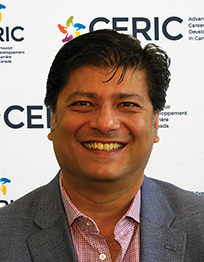
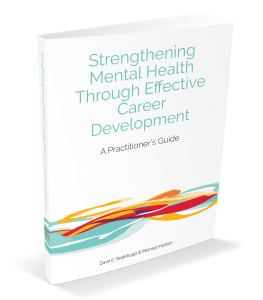


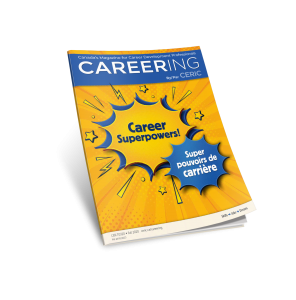
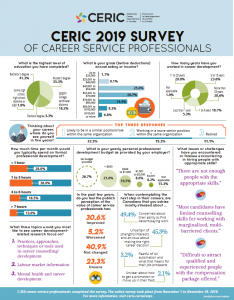


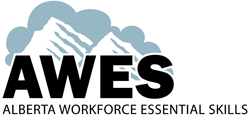







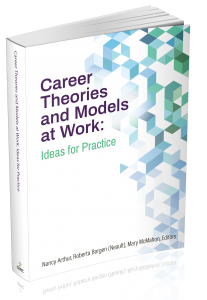

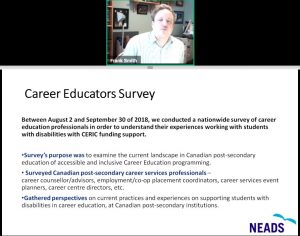
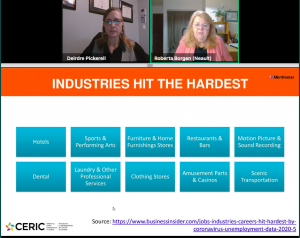

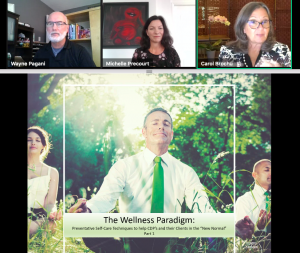
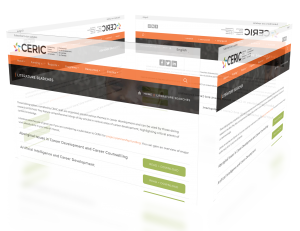
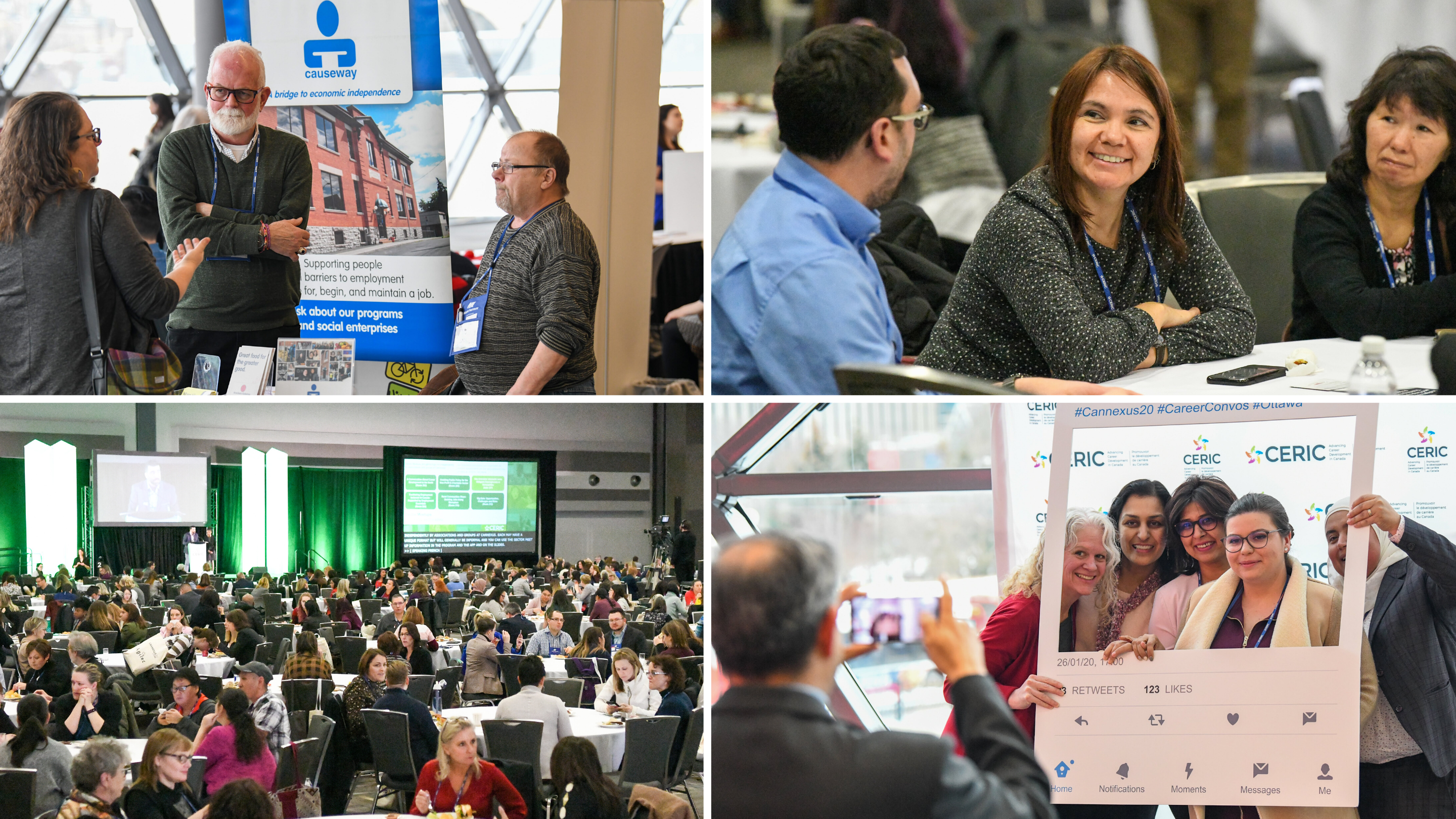


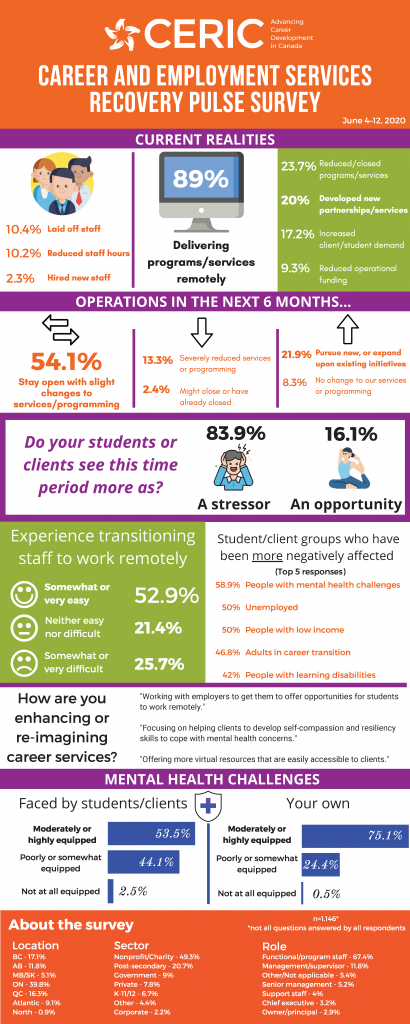



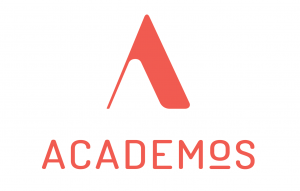

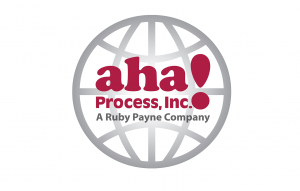
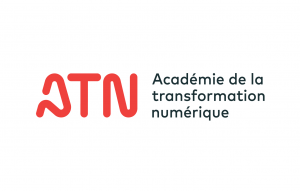
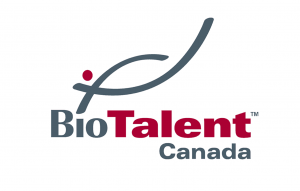
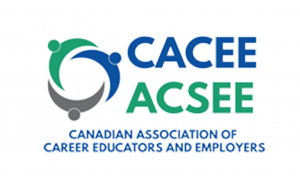
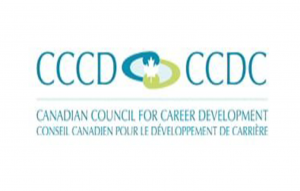

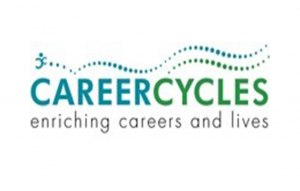
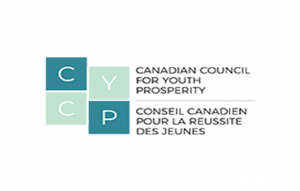

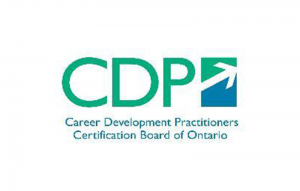


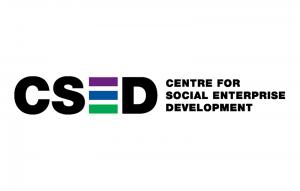
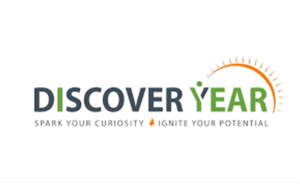
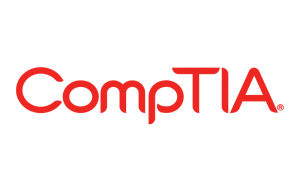
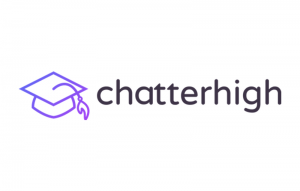
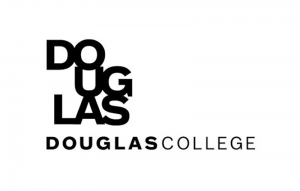
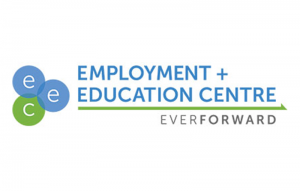
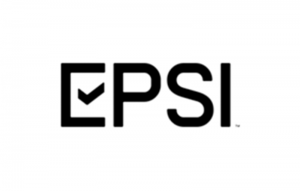

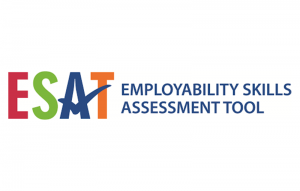
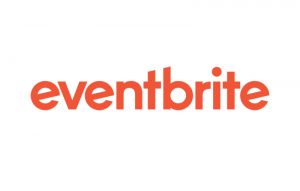


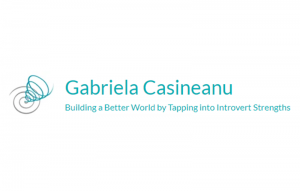



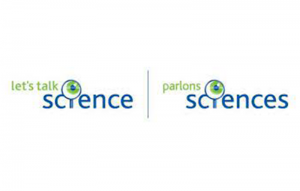
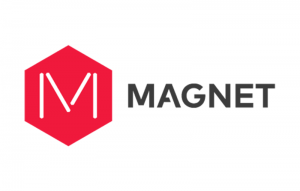
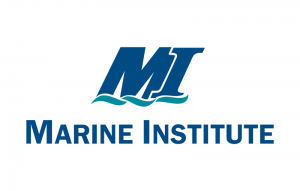

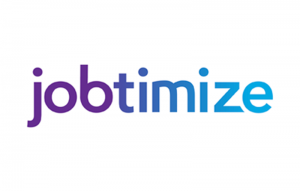

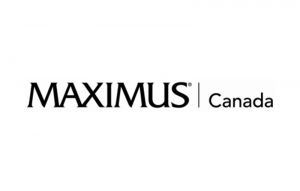

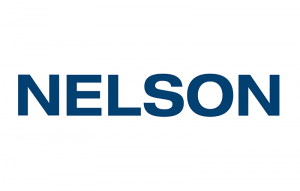


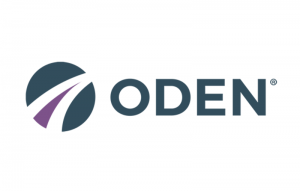
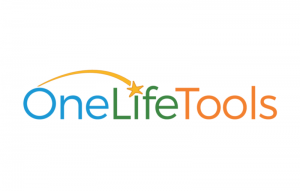
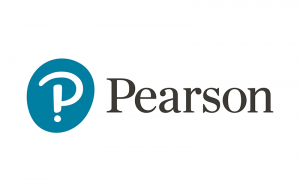
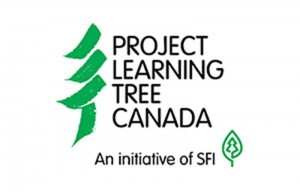
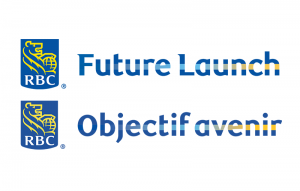



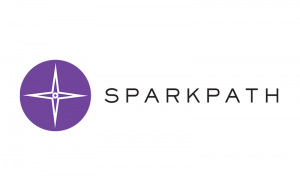
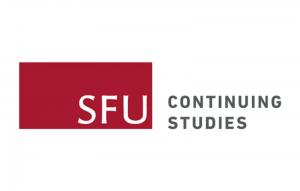

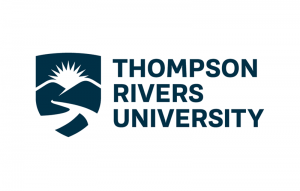
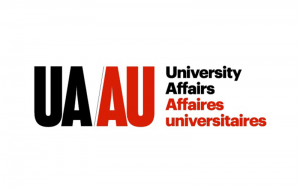


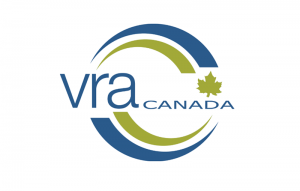

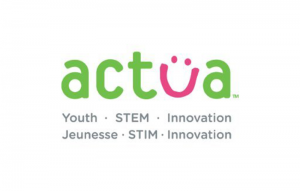
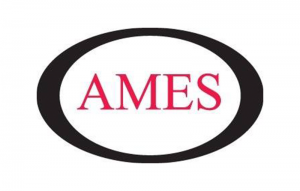

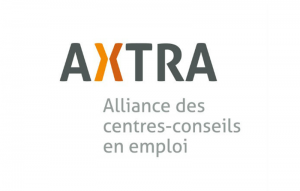

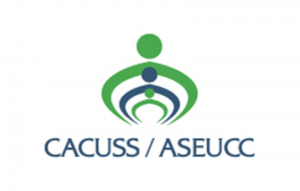

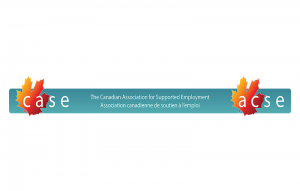


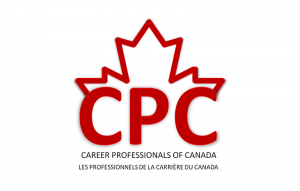
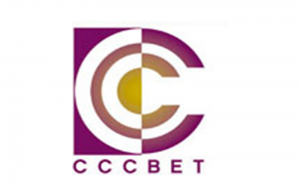




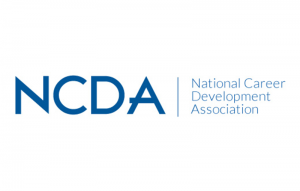

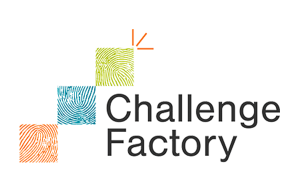

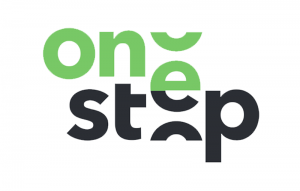
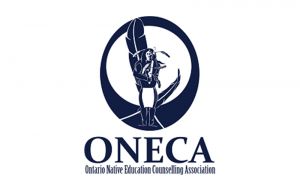
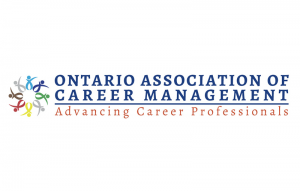
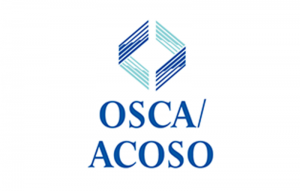
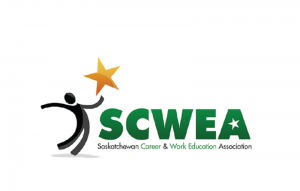
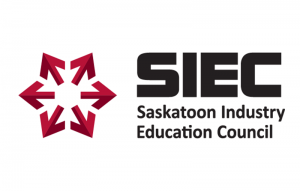



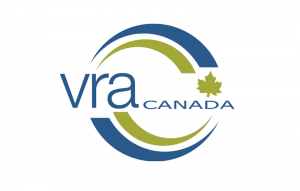




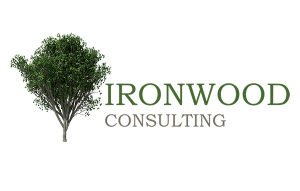
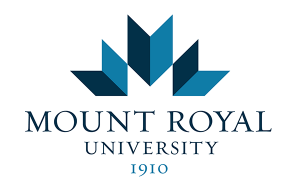
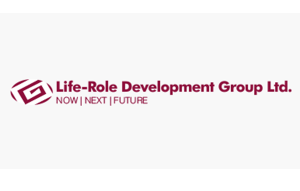
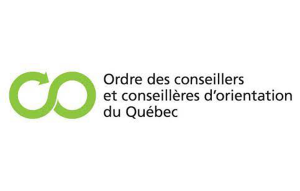
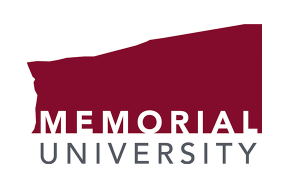
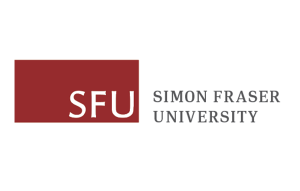
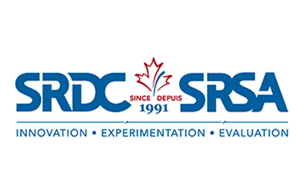

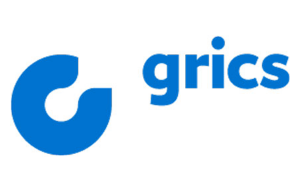


 Reinekke Lengelle, PhD, is the co-creator of Career Writing. She is also an Assistant Professor of Interdisciplinary Studies at Athabasca University, a researcher with The Hague University of Applied Sciences, The Netherlands and a symposium co-editor of the British Journal of Guidance and Counselling. She began her career as a playwright, poet and writing teacher and focused her academic work on the topic of “Writing the Self” of which Career Writing is one important branch.
Reinekke Lengelle, PhD, is the co-creator of Career Writing. She is also an Assistant Professor of Interdisciplinary Studies at Athabasca University, a researcher with The Hague University of Applied Sciences, The Netherlands and a symposium co-editor of the British Journal of Guidance and Counselling. She began her career as a playwright, poet and writing teacher and focused her academic work on the topic of “Writing the Self” of which Career Writing is one important branch.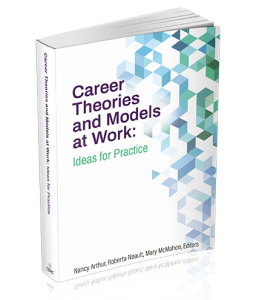 Career Theories and Models at Work: Ideas for Practice
Career Theories and Models at Work: Ideas for Practice

